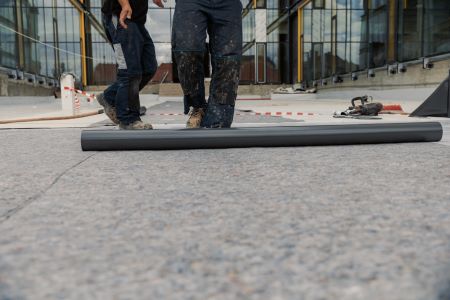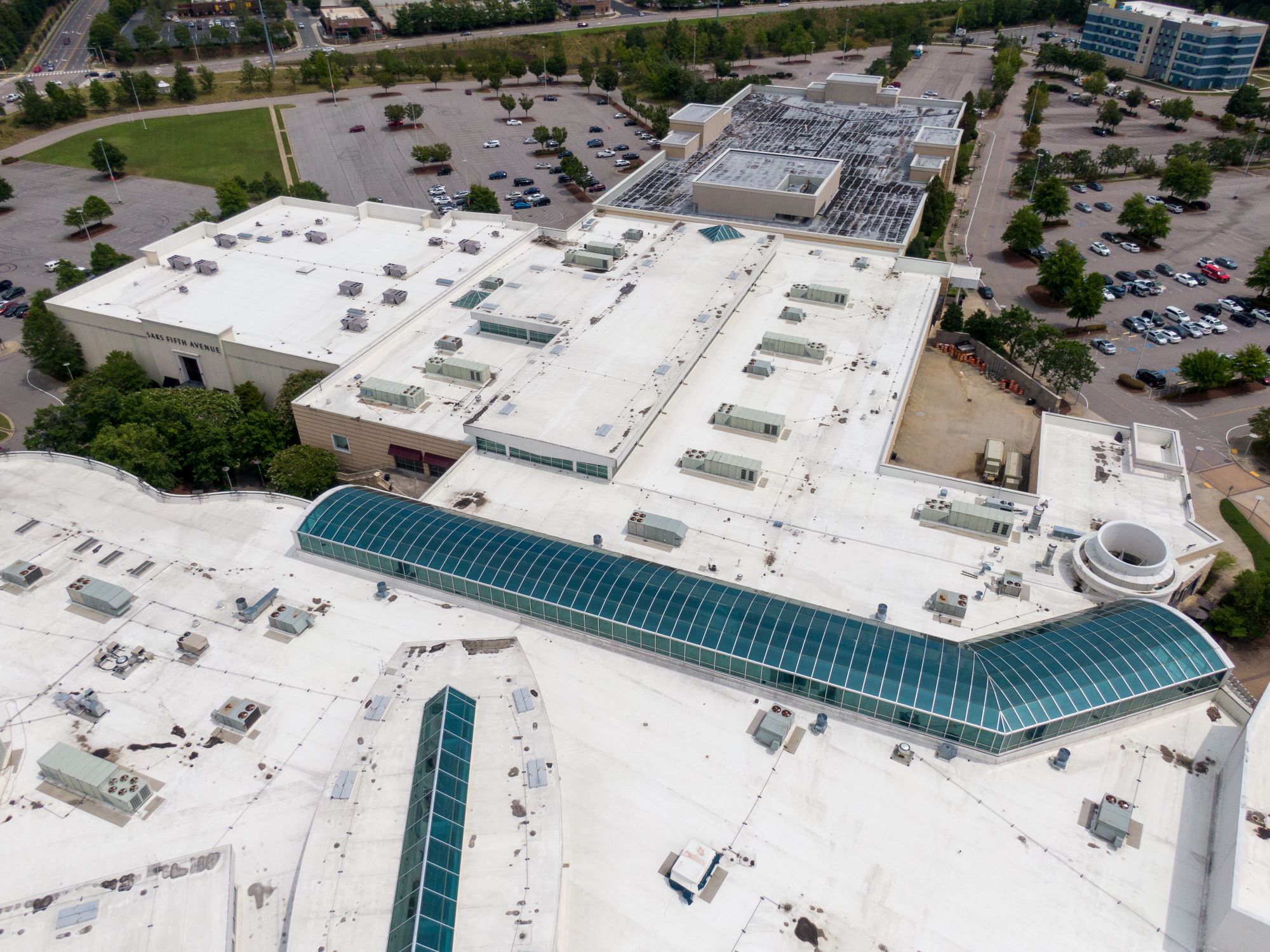A commercial roof is a critical component of any business establishment, offering protection against the elements, insulating the building, and ensuring the safety and comfort of its occupants. After the installation of a commercial roof, it’s essential to implement a well-structured maintenance plan to preserve its integrity and extend its lifespan. In this comprehensive guide, we will delve into the various aspects of commercial roof maintenance, highlighting the importance of roofing inspections and quotes, while also drawing parallels with residential roofing for a better understanding.
The Importance of Regular Roofing Inspections
A. Preventive Maintenance
The cornerstone of an effective commercial roof maintenance plan is regular roofing inspections. These inspections should be conducted at least twice a year, ideally in the spring and fall. Preventive maintenance helps identify and address potential issues before they escalate into costly and extensive problems.
Identifying Early Warning Signs
During a roofing inspection, a professional roofer will meticulously examine the roof’s condition. They look for signs of wear and tear, such as cracked or missing shingles, damaged flashing, pooling water, or deteriorating sealant. Identifying these early warning signs allows for prompt repairs, preventing further damage and potential leaks.
Leak Detection
One of the primary concerns with any roof, commercial or residential, is preventing leaks. Roofing inspections play a crucial role in detecting leaks before they cause significant interior damage. Addressing leaks promptly not only protects the building’s interior but also avoids the costly repairs associated with extensive water damage.
B. Compliance with Warranty Requirements
Most commercial roofs come with manufacturer warranties that specify certain maintenance requirements. Neglecting these requirements could void the warranty, leaving the building owner responsible for all repair costs. Regular roofing inspections ensure that you meet the maintenance obligations outlined in the warranty documentation, safeguarding your investment.
Roofing Quotes: Planning and Budgeting for Maintenance
A. The Role of Roofing Quotes
When it comes to commercial roof maintenance, having a clear understanding of costs is essential. Roofing quotes are estimates provided by professional roofing contractors that outline the anticipated expenses for maintenance, repairs, or replacement. These quotes serve as a valuable tool for planning and budgeting.
Budget Planning
Commercial property owners and facility managers can use roofing quotes to allocate funds for maintenance and repairs in advance. This proactive approach prevents unexpected financial burdens and ensures that funds are readily available when needed.
Cost Transparency
Roofing quotes provide transparency regarding the scope of work and associated costs. This transparency allows property owners to make informed decisions about the necessary maintenance and prioritize tasks based on their budget constraints.
B. Obtaining Roofing Quotes
To obtain accurate roofing quotes, it’s crucial to work with reputable roofing contractors with extensive experience in commercial roofing. Here’s a step-by-step guide on how to obtain roofing quotes:
Research and Select Qualified Contractors
Begin by researching and selecting a list of qualified roofing contractors with a proven track record in commercial roofing. Check for licenses, insurance, and customer reviews to assess their credibility.
Schedule On-Site Inspections
Contact the selected contractors to schedule on-site inspections. During these inspections, contractors will assess the roof’s condition and provide a detailed assessment of required maintenance or repairs.
Request Written Quotes
Request written quotes from the contractors after the on-site inspections. These quotes should include a breakdown of costs, the scope of work, materials to be used, and a timeline for completion.
Compare and Evaluate Quotes
Once you receive quotes from multiple contractors, take the time to compare and evaluate them. Consider the reputation of the contractors, the completeness of the quotes, and the proposed timeline.
Select the Contractor
Choose the roofing contractor that best meets your needs, taking into account factors such as cost, quality of materials, and past performance. Ensure that the selected contractor is willing to work within your budget and timeframe.
Residential Roofing vs. Commercial Roofing Maintenance
While both residential and commercial roofs serve the same fundamental purpose of providing shelter and protection, there are notable differences in their maintenance requirements and considerations. Understanding these distinctions can help commercial property owners make informed decisions regarding their roof’s care.
A. Size and Complexity
Commercial roofs are typically larger and more complex than residential roofs. They may include features such as multiple levels, HVAC units, skylights, and drainage systems. The size and complexity of commercial roofs often necessitate more extensive and specialized maintenance procedures.
B. Foot Traffic
Commercial roofs may experience more foot traffic than residential roofs. This increased activity can lead to accelerated wear and tear, making regular inspections and maintenance even more critical.
C. Roofing Materials
Commercial roofs often use different materials than residential roofs. These materials, such as modified bitumen, TPO, or EPDM, require specialized knowledge and skills for maintenance and repairs. It’s essential to hire roofing professionals with expertise in commercial roofing systems.
D. Regulatory Compliance
Commercial buildings are subject to specific regulations and codes that govern roofing materials, insulation, and energy efficiency. Compliance with these regulations is essential to avoid legal issues and potential fines. Regular roofing inspections can help ensure that the roof remains compliant.
E. Budget Considerations
Commercial property owners typically have larger budgets allocated for maintenance and repairs compared to residential homeowners. However, the size and complexity of commercial roofs mean that expenses can be substantial. It’s crucial for commercial property owners to plan and budget accordingly.
Best Practices for Commercial Roof Maintenance
A. Roof Cleaning
Regular roof cleaning is an essential component of commercial roof maintenance. Over time, dirt, debris, algae, and moss can accumulate on the roof’s surface, potentially causing damage. Cleaning the roof not only enhances its appearance but also prolongs its lifespan.
Pressure Washing
Pressure washing is an effective method for removing dirt and debris from the roof’s surface. However, it should be done by professionals who understand the appropriate pressure levels to avoid damaging roofing materials.
Algae and Moss Control
Algae and moss can thrive in moist environments, and commercial roofs are no exception. These organisms can damage roofing materials and cause premature deterioration. Roofing professionals can apply treatments to prevent their growth.
B. Gutter Maintenance
Proper gutter maintenance is crucial for commercial roofs, as clogged or damaged gutters can lead to water pooling on the roof or overflowing, causing water damage to the building’s exterior and foundation.
Regular Cleaning
Gutters should be cleaned regularly to remove leaves, debris, and other obstructions. This prevents water from backing up and causing damage.
Inspection for Damage
Inspect gutters for damage or signs of wear, such as rust, cracks, or loose fasteners. Damaged gutters should be repaired or replaced promptly.

C. Sealant and Flashing Inspection
Roof sealant and flashing play a vital role in preventing leaks and maintaining the roof’s integrity. During inspections, roofing professionals should assess the condition of these components and repair or replace them as needed.
Sealant
Roof sealant can degrade over time due to exposure to the elements. It should be inspected for cracks, gaps, or deterioration and resealed if necessary.
Flashing
Flashing, which is typically made of metal, is used to seal joints and transitions in the roof, such as around chimneys, vents, and skylights. Damaged or corroded flashing should be replaced to prevent leaks.
D. HVAC Unit Maintenance
Many commercial roofs house HVAC units, which require regular maintenance to ensure their efficient operation and prevent potential roof damage.
Inspection of Supports
Inspect the supports and curbs that hold HVAC units in place. Ensure they are secure and in good condition to prevent any damage to the roof structure.
Drainage Considerations
Ensure that HVAC units do not interfere with the roof’s drainage system. Proper drainage prevents water from pooling around the units, which can lead to leaks and damage.
E. Regular Roof Coating
Roof coatings can provide an additional layer of protection for commercial roofs. These coatings can extend the roof’s lifespan, improve energy efficiency, and enhance its resistance to UV rays and weathering.
Reflective Coatings
Reflective roof coatings can help reduce energy consumption by reflecting sunlight and heat away from the building. This can lead to lower cooling costs and improved comfort inside the building.
Waterproofing Coatings
Waterproofing coatings create a barrier that protects the roof from water intrusion. These coatings are particularly beneficial for flat or low-slope roofs.
F. Emergency Repairs
Despite proactive maintenance, emergencies can still arise. Severe weather events, falling debris, or accidents may damage the roof and require immediate repairs to prevent further harm to the building and its occupants.
Emergency Response Plan
Commercial property owners should have an emergency response plan in place. This plan should include contact information for roofing contractors who can provide rapid response and temporary repairs in the event of damage.
Temporary Measures
Temporary measures, such as tarping damaged areas or sealing leaks, can be implemented to mitigate further damage until permanent repairs can be carried out.
G. Record-Keeping
Maintaining detailed records of all maintenance and inspections is essential for tracking the roof’s history and compliance with warranty requirements.
Inspection Reports
Keep copies of inspection reports, including photographs of any identified issues. These records can serve as evidence of proper maintenance for warranty purposes.
Maintenance Logs
Maintain a log of all maintenance activities, including dates, descriptions of work performed, and associated costs. This log helps track expenses and plan for future maintenance needs.
In conclusion, the maintenance of a commercial roof after installation is a crucial aspect of ensuring its longevity and reliability. Regular roofing inspections, budget planning with roofing quotes, and adherence to best practices are essential components of an effective maintenance strategy. Property owners and facility managers should prioritize proactive maintenance to prevent costly repairs and protect their investment.
Furthermore, while there are similarities between residential and commercial roofing maintenance, there are also significant differences due to the scale, complexity, and materials involved. Understanding these distinctions is vital for making informed decisions about roof care.
By implementing a comprehensive maintenance plan, property owners can extend the life of their commercial roof, maintain compliance with warranty requirements, and safeguard their building and its occupants from the potential consequences of roofing issues. Ultimately, investing in regular maintenance is a proactive and cost-effective approach to ensuring the long-term performance of a commercial roof.

